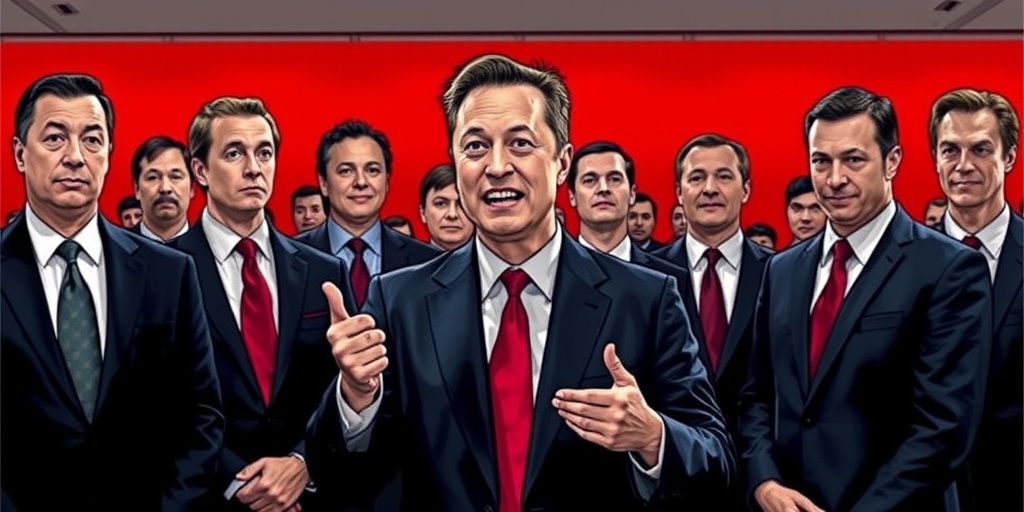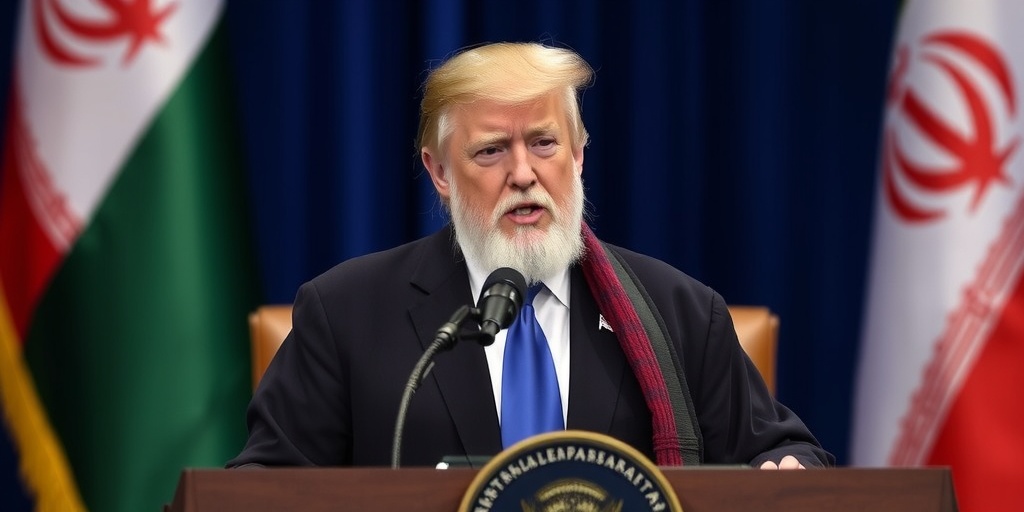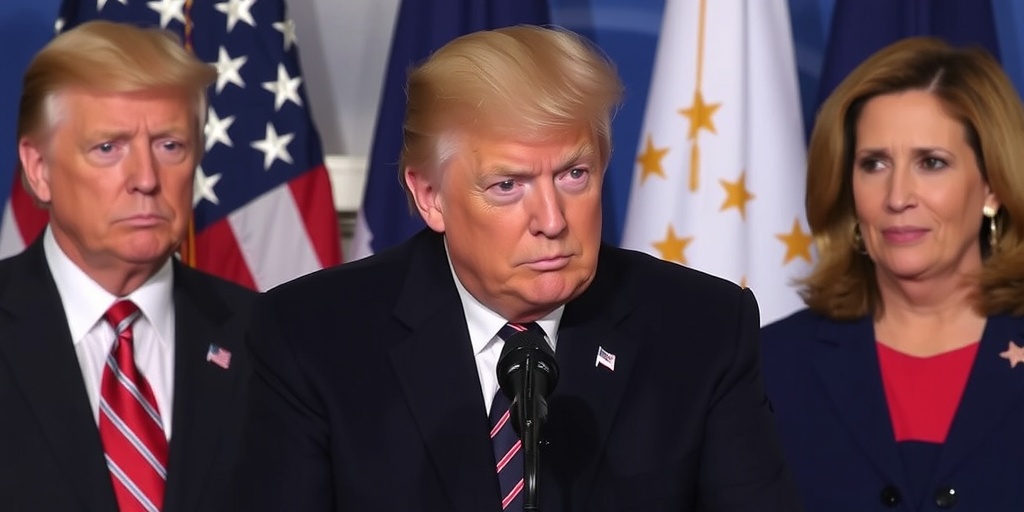Now Reading: Markets Remain Unshaken by Political Turmoil in Washington, for Now
-
01
Markets Remain Unshaken by Political Turmoil in Washington, for Now
Markets Remain Unshaken by Political Turmoil in Washington, for Now

Trump’s Second Presidency: Economic Challenges Ahead Amid Policy Uncertainty
With the inauguration of his second term, President Trump has sparked a whirlwind of activity in Washington, characterized by sweeping changes at federal agencies, aggressive tariff threats, and contentious negotiations aimed at passing a Republican budget through a closely divided Congress. The atmosphere remains charged as business leaders and corporate investors maintain a cautiously optimistic outlook, believing that the economic landscape will ultimately stabilize. Jason Pride, chief of investment strategy and research at Glenmede Trust Company, remarks that financial markets currently exhibit little concern over the political upheaval.
However, this optimism may prove fragile, as potential legislative decisions carry significant implications for the economy and the stock market. Investors are keenly anticipating the continuation of the tax cuts enacted during Trump’s first term, which primarily benefited corporations and affluent individuals. Trade organizations, including the Business Roundtable and the National Association of Wholesaler-Distributors, express strong confidence that these tax provisions will be extended before the year’s end. They argue that failing to do so would effectively equate to implementing a tax increase.
Despite this prevailing confidence, the financial math behind extending these tax cuts poses substantial challenges. Analysts estimate that the cost of maintaining such tax relief could reach a staggering $4 trillion over a decade. Consequently, Congress must navigate complex negotiations about what areas can be adjusted to save or generate revenue, alongside the politically sensitive topic of cutting federal benefits.
In the bond market, where traders assess both inflationary trends and the risk of an economic downturn, initial worries stemming from Trump’s erratic negotiation tactics regarding tariffs have diminished. Many analysts believe that the imposition of tariffs serves more as a geopolitical strategy rather than a crucial component of budgetary revenue. This sentiment echoes in Wall Street’s confidence in newly appointed Treasury Secretary Scott Bessent, a billionaire hedge fund manager whose economic policies are expected to foster long-term growth and reduced budget deficits, as expressed by Deutsche Bank chief economist Matt Luzzetti.
Nonetheless, the ambitious goals set forth by Bessent — including making the 2017 tax cuts permanent — clash with Trump’s recent reassurances that vital social programs like Social Security, Medicare, and Medicaid will remain untouched in any cost-reduction plans. This pledge is echoed by several Republican legislators, further complicating the budgetary landscape given the slim majority held by Republicans in Congress.
Amid ongoing discussions of budget efficiency, a high-profile initiative led by tech entrepreneur Elon Musk aims to streamline federal operations through the Department of Government Efficiency (DOGE). Many in the business community, including prominent figures like the co-founder of Airbnb, regard Musk’s efforts as a possible solution for uncovering significant waste and fraud within the federal budget, potentially providing funding for future tax cuts.
However, concerns remain about the tangible outcomes of the DOGE initiative. While Trump and Musk have claimed potential savings of trillions, current reports indicate only about $55 billion in savings, lacking robust documentation. Critics argue that essential portions of federal spending, including mandatory social safety nets and defense, make significant budgetary reductions difficult without touching the primary sources of expenditure.
Economists emphasize that meaningful spending cuts must address the overwhelming proportions of the federal budget allocated to Social Security, Medicare, Medicaid, and interest payments on government debt. Jessica Riedl from the Manhattan Institute asserts that any serious dialogue about expenditure reductions must focus on these substantial areas.
Pride from the Glenmede Trust highlights that allowing tax cuts to lapse could hinder economic growth. Moreover, substantial budget reductions being discussed could similarly adversely affect job growth and consumer spending, as government expenditures play a crucial role in economic stimulation.
Despite Trump’s populist tax proposals aimed at reducing the burden on various sectors, including a pledge to eliminate taxes on Social Security payments, these initiatives appear to be losing momentum in Congress. Analysts suggest this trend could indicate a larger issue concerning the administration’s budgetary strategy, as they struggle to provide coherent, effective funding mechanisms for proposed tax cuts.
As the administration navigates its budgetary challenges, skepticism pervades regarding the feasibility of harmonizing the objectives of reducing the deficit, lowering taxes, and sustaining economic growth. Luzzetti suggests a potential compromise might involve enacting tax cuts with a shorter timeline, creating the perception of fiscal responsibility while leaving the door open for future extensions.
Ultimately, as Congress grapples with these dilemmas, analysts and corporate leaders remain vigilant. They forecast possible confrontations between congressional supporters of innovative tax strategies and nonpartisan committees responsible for assessing fiscal proposals. Such disputes could unsettle markets, highlighting the intricate dance of politics and economics that now defines Trump’s second term.
Stay Informed With the Latest & Most Important News
Previous Post
Next Post
-
 01New technology breakthrough has everyone talking right now
01New technology breakthrough has everyone talking right now -
 02Unbelievable life hack everyone needs to try today
02Unbelievable life hack everyone needs to try today -
 03Fascinating discovery found buried deep beneath the ocean
03Fascinating discovery found buried deep beneath the ocean -
 04Man invents genius device that solves everyday problems
04Man invents genius device that solves everyday problems -
 05Shocking discovery that changes what we know forever
05Shocking discovery that changes what we know forever -
 06Internet goes wild over celebrity’s unexpected fashion choice
06Internet goes wild over celebrity’s unexpected fashion choice -
 07Rare animal sighting stuns scientists and wildlife lovers
07Rare animal sighting stuns scientists and wildlife lovers





















